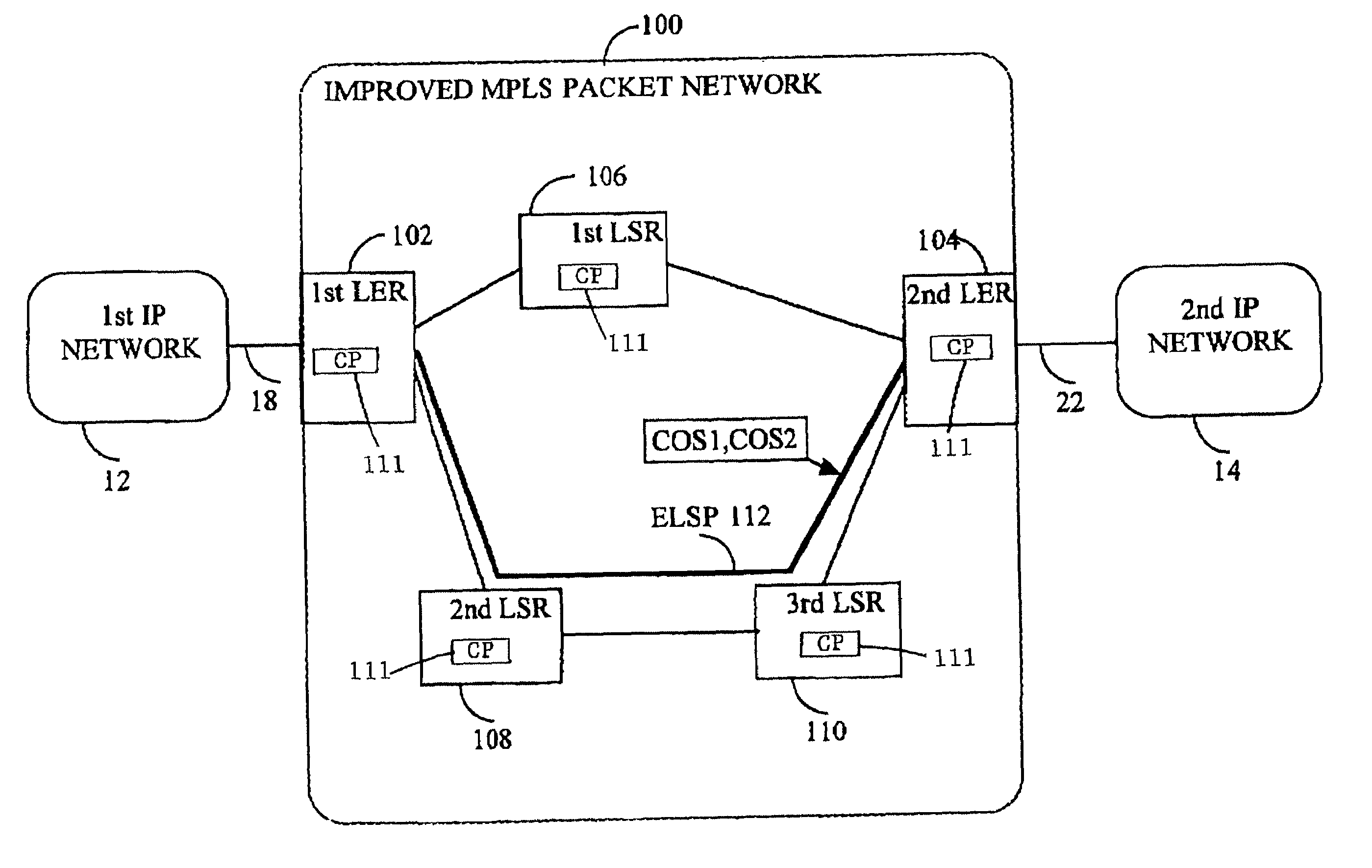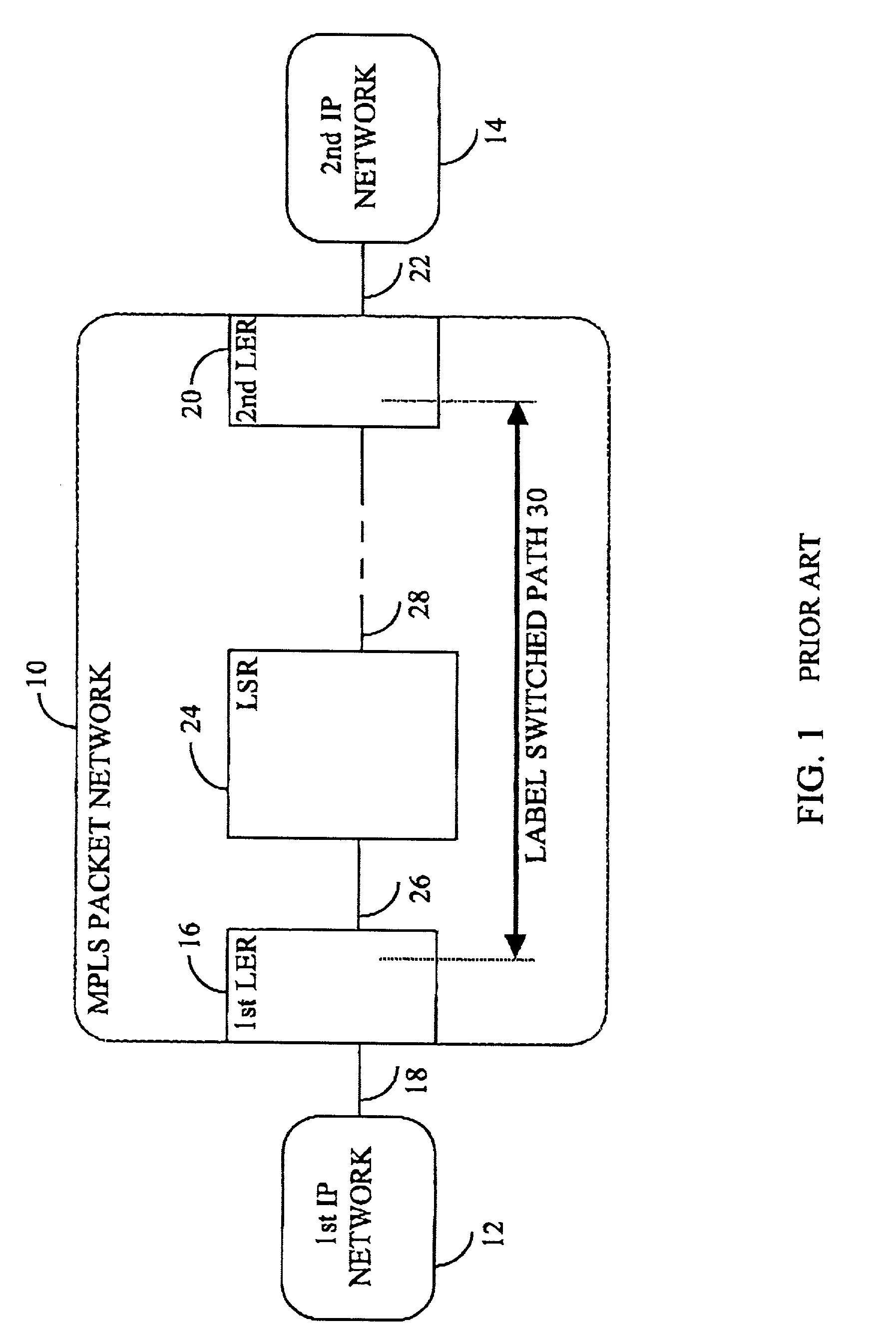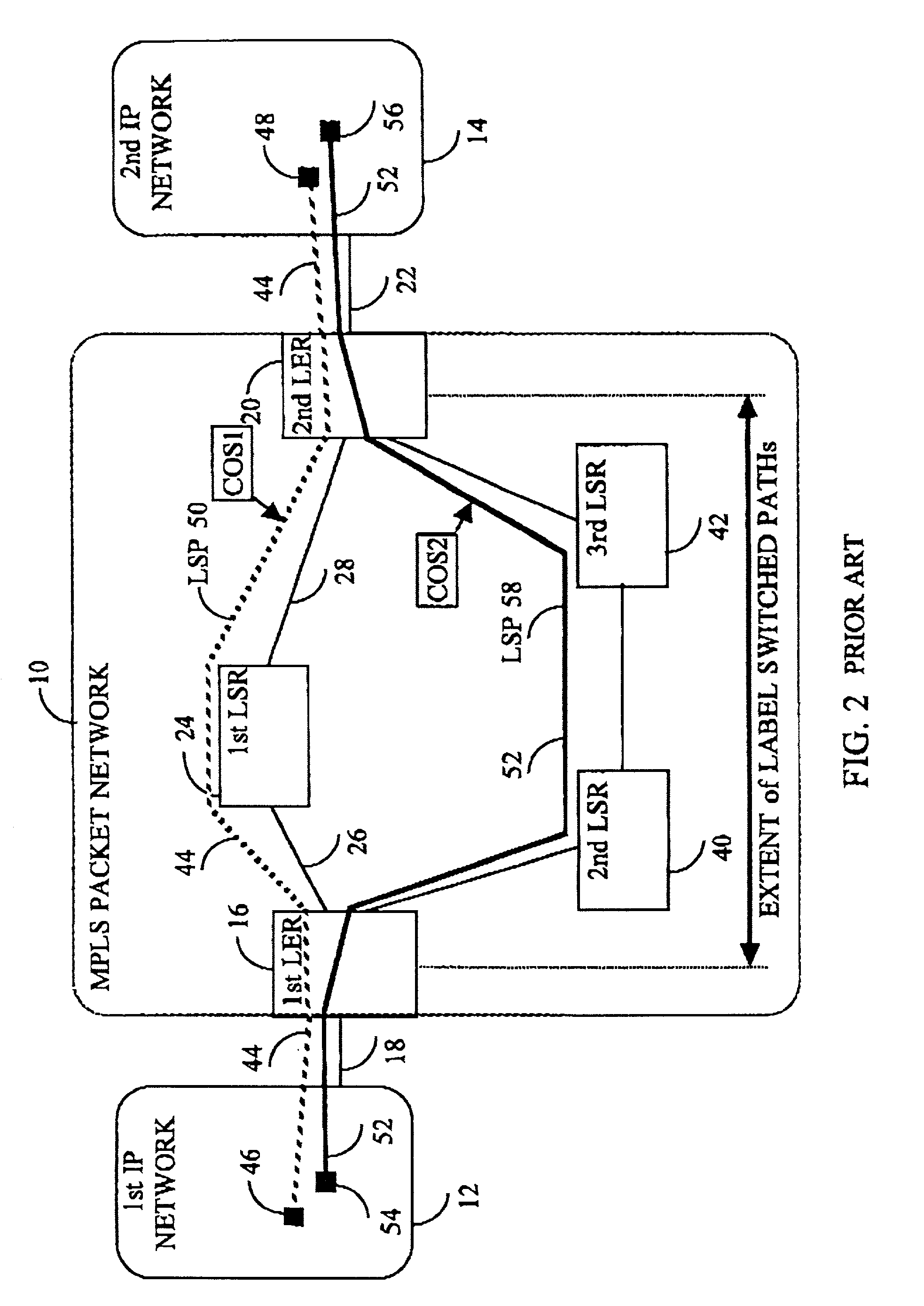Label distribution protocol supporting multiple classes of service in a multi protocol label switching (MPLS) network, methods and MPLS network using thereof
a multi-protocol label switching and label distribution technology, applied in data switching networks, hybrid switching systems, digital transmission, etc., can solve the problems of imposing undesirable restrictions on the pre-emption relationship between various classes of services, affecting the ability to offer robust and measurable availability and qos slas to such customers, and affecting the restoration time, so as to improve the scalability of both control and data planes, the effect of reducing the number of lsps in the network
- Summary
- Abstract
- Description
- Claims
- Application Information
AI Technical Summary
Benefits of technology
Problems solved by technology
Method used
Image
Examples
first embodiment
[0083]The set-up message object (ELSP object) 220 of a signalling message of the first embodiment is shown in FIG. 5. The object header of an ELSP object 220 follows the RSVP specification and contains the length 210 of the object, a class 212 which uniquely identifies the new ELSP object type, and a multi-class-of-service message object type 214 (C-type field 214) which should have a value of 127 or less in order to be processed correctly by the nodes processing an RSVP message containing an ELSP object 220. The value of the C-type field 214 ensures backwards compatibility with MPLS nodes that are not equipped to handle ELSP objects, and hence should reject the entire message.
[0084]The object multi-class-of-service set-up message contents 208 of an ELSP object 220 contains a reserved field 222 of 28 bits length, a numTP field 212 of 4 bits length, and a number of Traffic Profile (TP) fields 224, TP(1) to TP(n). The number “n” of the TP fields 224 is indicated by the value of the nu...
second embodiment
[0089]In the invention, it is extended to support the setup of differentiated services over a single label switched path in the improved MPLS packet network as will be described in detail below.
[0090]Traffic parameters are signalled in CR-LDP using set-up message objects, the set-up message objects being TLV (Type-Length-Value) objects 300. The TLV format, which describes the generic message object used in CR-LDP, is shown in FIG. 7. A TLV object 300 contains a common message header 301, having a U-bit sub-field 302, an F-bit sub-field 304, a 14-bit type sub-field field 306, and a 16-bit length field 308. The TLV object 300 also includes a variable length value field 310, which has the set-up message object contents. The usage of these fields in CR-LDP is described in detail in RFC 3036.
[0091]The terminology used in CR-LDP differs from that used in RSVP. A traffic specification (TSPEC in RSVP) is termed an “Ordered Aggregate” (OA) in CR-LDP. In the case of RSVP, the traffic specific...
PUM
 Login to View More
Login to View More Abstract
Description
Claims
Application Information
 Login to View More
Login to View More - R&D
- Intellectual Property
- Life Sciences
- Materials
- Tech Scout
- Unparalleled Data Quality
- Higher Quality Content
- 60% Fewer Hallucinations
Browse by: Latest US Patents, China's latest patents, Technical Efficacy Thesaurus, Application Domain, Technology Topic, Popular Technical Reports.
© 2025 PatSnap. All rights reserved.Legal|Privacy policy|Modern Slavery Act Transparency Statement|Sitemap|About US| Contact US: help@patsnap.com



